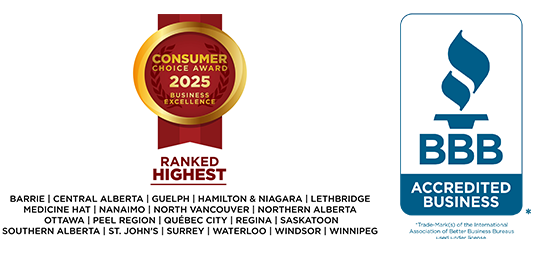CALGARY, AB – January 13, 2025 – Canadians are feeling more pessimistic about their personal finances heading into 2025, despite declining interest rates. The latest MNP Consumer Debt Index has dropped to 79 points, a staggering 10-point decline from last quarter. This marks the second-lowest level recorded since the Index’s inception in 2017. Additionally, Canadians’ net personal debt rating has plunged to an all-time low, dropping 12 points from the previous quarter. The only other time Canadians’ net personal debt rating reached close to this low point occurred in December 2022.
“While interest rate cuts last year provided some initial relief from their financial concerns, Canadians are starting 2025 with a more pessimistic view of their finances,” says Grant Bazian, president of MNP LTD, the country’s largest insolvency firm. “Holiday bills are squeezing household budgets. Additionally, economic uncertainty, compounded by the U.S. election and concerns about tariffs, may be causing anxiety for Canadians.”
This economic uncertainty is reflected in Canadians’ pessimistic outlook on their financial future. Fewer this quarter expect their debt situation to improve one year from now (27%, -4 pts), while a growing number anticipate it will worsen (19%, +7 pts). Additionally, anxieties around job loss have reached an all-time high, with two in five Canadians (41%, +9 pts) worried someone in their household could lose their job. Half of Canadians (51%, +5 pts) believe they will not be able to cover all their living and family expenses in the next 12 months without going further into debt.
The number of Canadians teetering on the edge of financial insolvency increased significantly this quarter. Half (50%) now indicate they are $200 or less away from insolvency, a significant eight-point increase since last quarter. A third say they are already insolvent (35%), jumping nine points. Women (55%, +4 pts) are more likely to be $200 or less away from insolvency. However, the increase in men who are $200 or less away from insolvency (44%) was particularly striking this quarter, jumping 13 points.
“Many Canadians are already tightening their finances, reassessing budgets, and exploring cost-cutting measures to manage rising costs or debt repayment. Unfortunately, even substantial sacrifices may fall short of providing meaningful financial relief in some cases, despite lower interest rates,” says Bazian.
Canadians’ attitudes towards their finances and interest rates have worsened this quarter despite consecutive interest rate cuts in 2024. Half of Canadians (50%, +2 pts) are still concerned about their ability to repay their debts, even if interest rates decline. Nearly half (46%, +4 pts) are concerned that rising interest rates could move them towards Bankruptcy, while two-thirds (65%, +2 pts) say they desperately need interest rates to go down.
The financial cushion for many households is eroding as disposable income shrinks, leaving less room to manage unexpected expenses. Canadians have $147 less left over at the end of the month on average, decreasing to $790 this quarter.
“This decline in month-end finances leaves households vulnerable to unexpected expenses or the impacts of economic changes,” explains Bazian. “For those already living paycheque to paycheque, any financial disruption could quickly escalate into a crisis.”
Canadians’ ability to absorb an extra $130 in interest rate increases has deteriorated as financial pressures rise. Fewer this quarter (17%, -5 pts) feel much better equipped to handle such an increase, while more (37%, +4 pts) report their ability to handle this increase has worsened. The possibility of unexpected expenses or changes in circumstances also weighs heavily on Canadians. A third (33%, +7 pts) express a lack of confidence in their ability to cope with an unexpected auto repair or purchase. Nearly two in five (38%, +6 pts) indicate they are not confident in their ability to cope with a job loss or change in wages or seasonal work.
Bazian says the convergence of post-holiday bills, economic pressures, and unexpected expenses can exacerbate financial challenges. While the new year is traditionally a time for setting financial goals, some Canadians will find themselves grappling with the financial fallout of holiday spending. Seeking support can help address debt concerns early in 2025.
Reaching out for advice from a Licensed Insolvency Trustee is a critical first step for those feeling overwhelmed by debt. Licensed Insolvency Trustees provide free consultations to help individuals assess their financial situation, understand their options, and create customized plans to regain control of their finances.
“This time of year can feel overwhelming for many as the holiday bills arrive and financial realities set in. However, reaching out for professional advice can provide an opportunity to regain control and avoid more severe financial consequences,” says Bazian. “That first conversation with a Licensed Insolvency Trustee can help you explore solutions such as budgeting, debt consolidation, debt management plans, Consumer Proposals, and in some cases, Bankruptcy.”
MNP’s national team of Licensed Insolvency Trustees offers free consultations across the country to help severely indebted Canadians get unbiased debt advice, understand their rights, and determine the best path forward. Licensed Insolvency Trustees are the only federally regulated debt professionals who can assist with all the debt relief options, including Consumer Proposals and Bankruptcy, stop harassment from debt collectors, and discharge people from debt.
About MNP LTD
MNP LTD, a division of the national accounting firm MNP LLP, is the largest insolvency practice in Canada. For more than 50 years, our experienced team of Licensed Insolvency Trustees and advisors have been working with individuals to help them recover from times of financial distress and regain control of their finances. With more than 240 offices from coast to coast, MNP helps thousands of Canadians each year who are struggling with an overwhelming amount of debt. Visit MNPdebt.ca to contact a Licensed Insolvency Trustee or use our free Do-it-Yourself (DIY) debt assessment tools. For regular, bite-sized insights about debt and personal finances, subscribe to the MNP 3-Minute Debt Break Podcast.
About the MNP Consumer Debt Index
The MNP Consumer Debt Index measures Canadians’ attitudes toward their consumer debt and gauges their ability to pay their bills, endure unexpected expenses, and absorb interest-rate fluctuations without approaching insolvency. Conducted by Ipsos and updated quarterly, the Index is an industry-leading barometer of financial pressure or relief among Canadians.
Now in its thirty-first wave, the Index has decreased to 79 points, down 10 points since last quarter to reach the second-lowest score recorded since its inception. Visit MNPdebt.ca/CDI to learn more.
The data was compiled by Ipsos on behalf of MNP LTD between December 6 and December 17, 2024. For this survey, a sample of 2,003 Canadians aged 18 years and over was interviewed. Weighting was then employed to balance demographics to ensure that the sample's composition reflects that of the adult population according to Census data and to provide results intended to approximate the sample universe. The precision of Ipsos online polls is measured using a credibility interval. In this case, the poll is accurate to within ±2.5 percentage points, 19 times out of 20, had all Canadian adults been polled. The credibility interval will be wider among subsets of the population. All sample surveys and polls may be subject to other sources of error, including, but not limited to, coverage error and measurement error.


